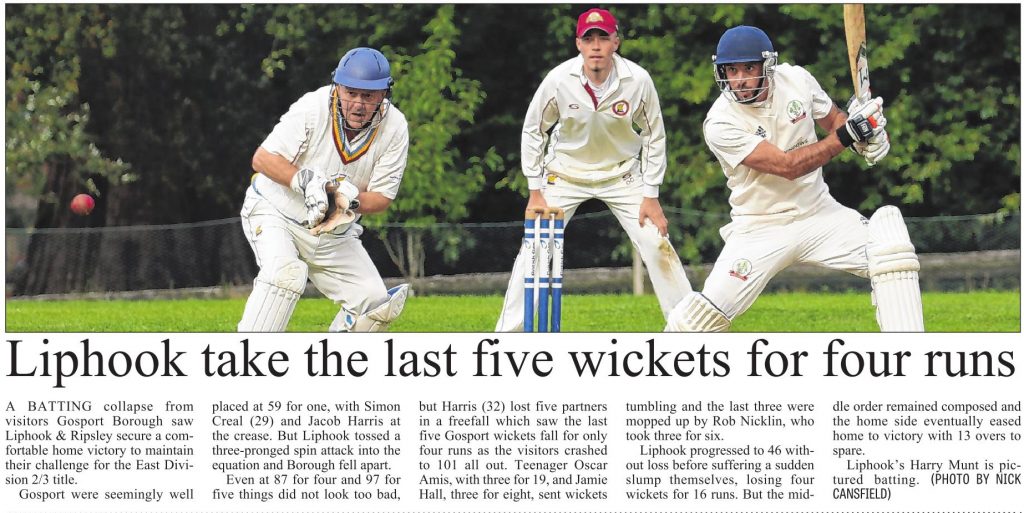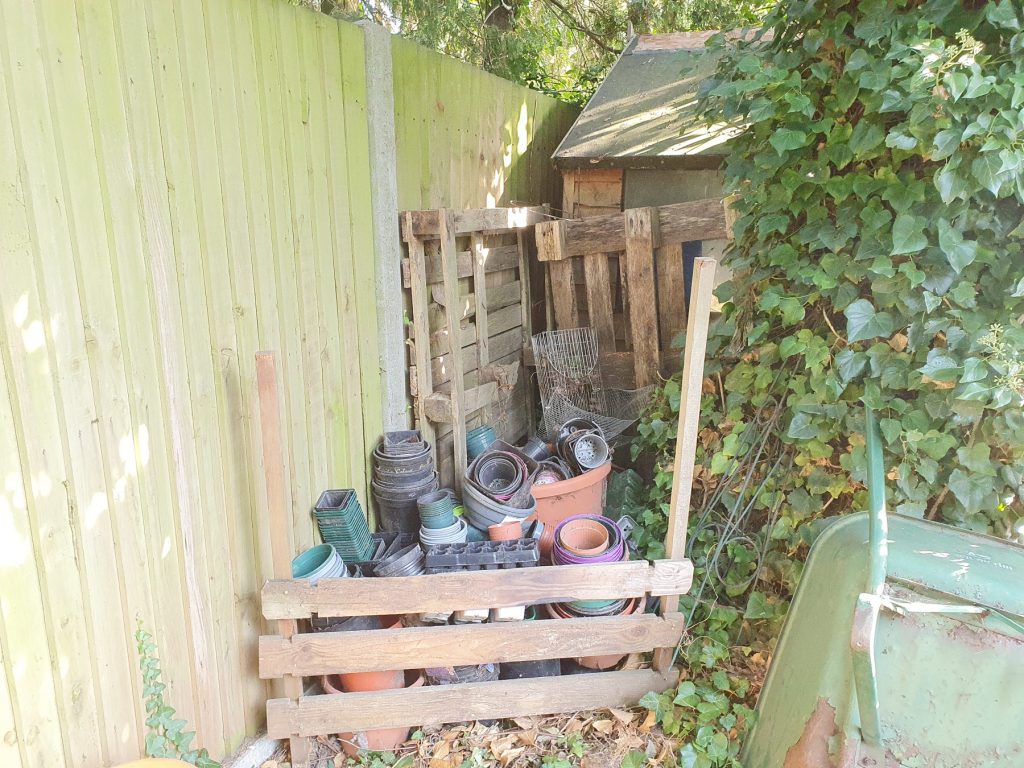I forgot to mention last Friday how much Nigel raved, during our FATN recording, about Nicktor’s photo which was published in the Herald last week. I don’t think I’ve ever heard anyone describe a photo better or suggest that Nicktor should take photos for the nationals. Anyway, here’s the photo and accompanying story.

We both agreed that it was, indeed, a most impressive photograph. Given that Nicktor regularly takes about 35,000 photos per innings, I guess he has to manage at least one good one.
As opposed to me. I regularly take a photograph, when I don’t forget, in order to add an image to this blog. Sometimes I go a bit crazy and take three. Today, being a Monday, I took a photo on my walk in.

And the park was pretty much as deserted as it looks. Obviously there were the usual joggers – some said good morning, others said nothing – but apart from a few distant dog walkers, I didn’t see anyone.
Waitrose was similar and Starbucks delightfully so. Things only got a bit hectic by the time I reached West Street on my way to Smiths (for the post office). A police wagon was parked outside the dry cleaner and six police officers and someone who could have been a social worker, had surrounded the homeless guy outside Argos. Or, rather, the shop that once was Argos but has been empty for years.
Before it was Argos, it was Woolies but that ‘belongs to the realm of history’.
The poor guy has been camped out in the doorway for ages. He has a dog and all his possessions huddled with him. He’s never, as far as I can tell, been any trouble. But, of course, that doesn’t stop people moaning and complaining and getting the police involved.
Surely a better solution would be to open up the empty space and let him sleep inside.
Sorry, I forgot myself for a moment. That is, clearly, impossible. No tenant is better than a homeless person.
I have no idea what happened but I’m sure I’ll read about it in the Herald next week. Speaking of which, it appears that our MP, Jeremy Hunt, has had some sort of effect on the town. All the plastic barriers have vanished in the Borough and been replaced with plastic planters full of flowers. Now, if he could just get rid of the cars, that would be brilliant.
Back at home, I applied myself to a big job in the garden. Given we were experiencing a heatwave, it was obviously the right time to do it.
I had to move the big compost bin to behind the greenhouse rather than in the outer reaches of The Former Residence of Xun Ma. Before I could do that, I had to clear a load of stuff from beneath the yew tree. Fortunately, Gardener Dave and Polish Andy had emptied the compost bin into the beehives, which made it considerably easier.
Then, having moved the stuff then the compost bin, I had to build a second pot trap.
I had previously built (from bits and pieces of old wood) a small pot trap under the conifer. Mirinda had other ideas and, seeing an opportunity and grasping it, told the gardeners to turn it into a leaf trap. The pots, released from their corral, were scattered between the conifer and the fence. This made them, basically, inaccessible.
So, I built (from different bits and pieces of old wood) a second pot trap behind the conifer.

Hopefully this will be the final pot trap I have to make. Though, I doubt it. The shed will have to go at some stage which will mean moving the pots again. I sat back and admired my work, trying not to think of the next trap I’ll eventually make.
After dinner, I settled back in my office to watch this week’s webinar from the Western Front Association. It was, unusually from the Eastern Front and was called The Great Siege of Przemyjl. It was presented by Professor Alexander Watson.

Przemyjl (pronounced ‘Shemish’ with the merest hint of the letter ‘p’ at the start) is now in Poland but, in 1914 was part of the Austro-Hungarian empire. It was in an area called Galicia which I found a bit confusing given there’s a Galicia in Spain. Still, that aside, the webinar was excellent and full of stuff I had no idea about.
For starters, according to Prof Watson, had the Russian army managed to take Przemyjl at the first time of asking (October 1914) then the First World War would have probably ended soon afterwards.
But, through errors on both sides which resembled the Keystone Cops more than anything else, the Russians didn’t take Przemyjl in 1914 and the war rumbled on.
The Russians did, however, manage to completely obliterate Przemyjl in 1915 but, by that time, the war in the West was inexorably headed for longevity.
The talk was excellent. So much so that I immediately bought the Professor’s book, The Fortress afterwards, for a bit of bedtime reading.
The title of the post comes from a quote made by someone regarding Przemyjl and the state of the fortifications ‘protecting’ the town in 1914.
Today, this happened
In 1741, complete with elaborate wig, Handel finished the Messiah today. It took him 23 (or 24, depending on the source you read) days and is a credit to him given it is still sung and recorded over 270 years later. I doubt that there are many people who have not heard at least part of the Messiah. It’s a pity George Frideric (or Frederic, depending on the source) isn’t getting royalties because he’d be loaded by now.
The first time it was recorded in almost it’s entirely was in 1928 when it was put onto 78rpm discs. I don’t know how many. And, I wouldn’t be surprised if that was how I first heard it, given I grew up in a house with lots of 78rpm discs.
Handel normally wrote operas but decided to make Messiah an oratorio, which is a piece for orchestra and voices but without acting or elaborate costumes. It has a popular feel to it which probably explains its continued success.
There was a lot of nonsense at the time that Handel wrote Messiah under the guidance of some heavenly inspiration which explains why it only took 23 (or 24) days and is so brilliant. However, historians point to the fact that he wrote most of his stuff in super quick time so why should his Messiah be any different?
Mind you, the first public performance wasn’t until April 1742, and he is known to have fiddled with it before-hand. He is also known to have made changes over the years, never seemingly, 100% satisfied with the finished product. So much for divine inspiration then.
Moving right up to May 2020, the wonderfully named Self-Isolation Choir, released a version recorded, you guessed it, in isolation. It’s on Youtube, here:


